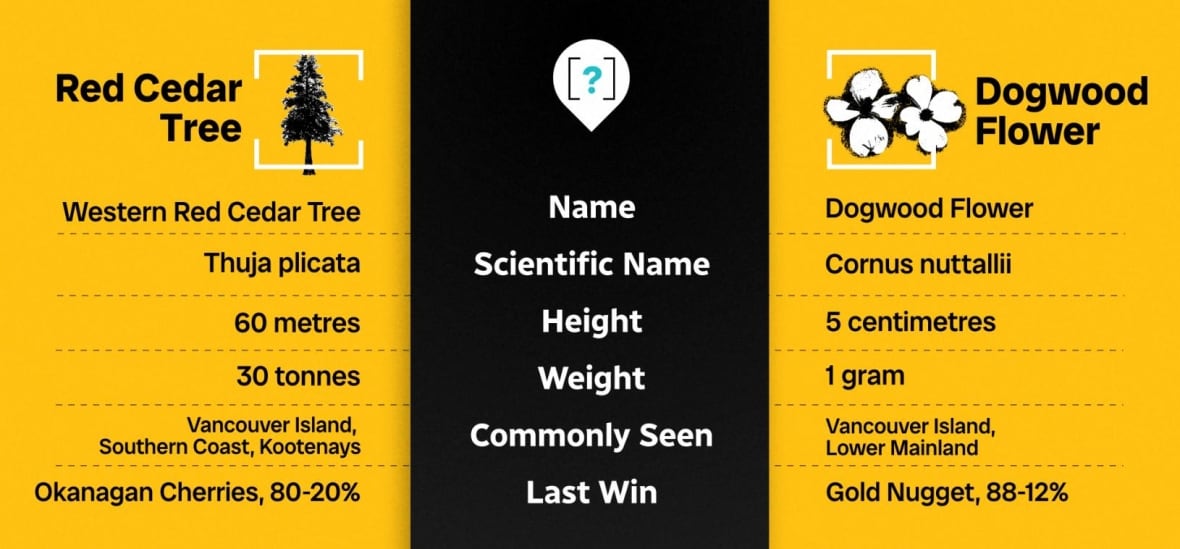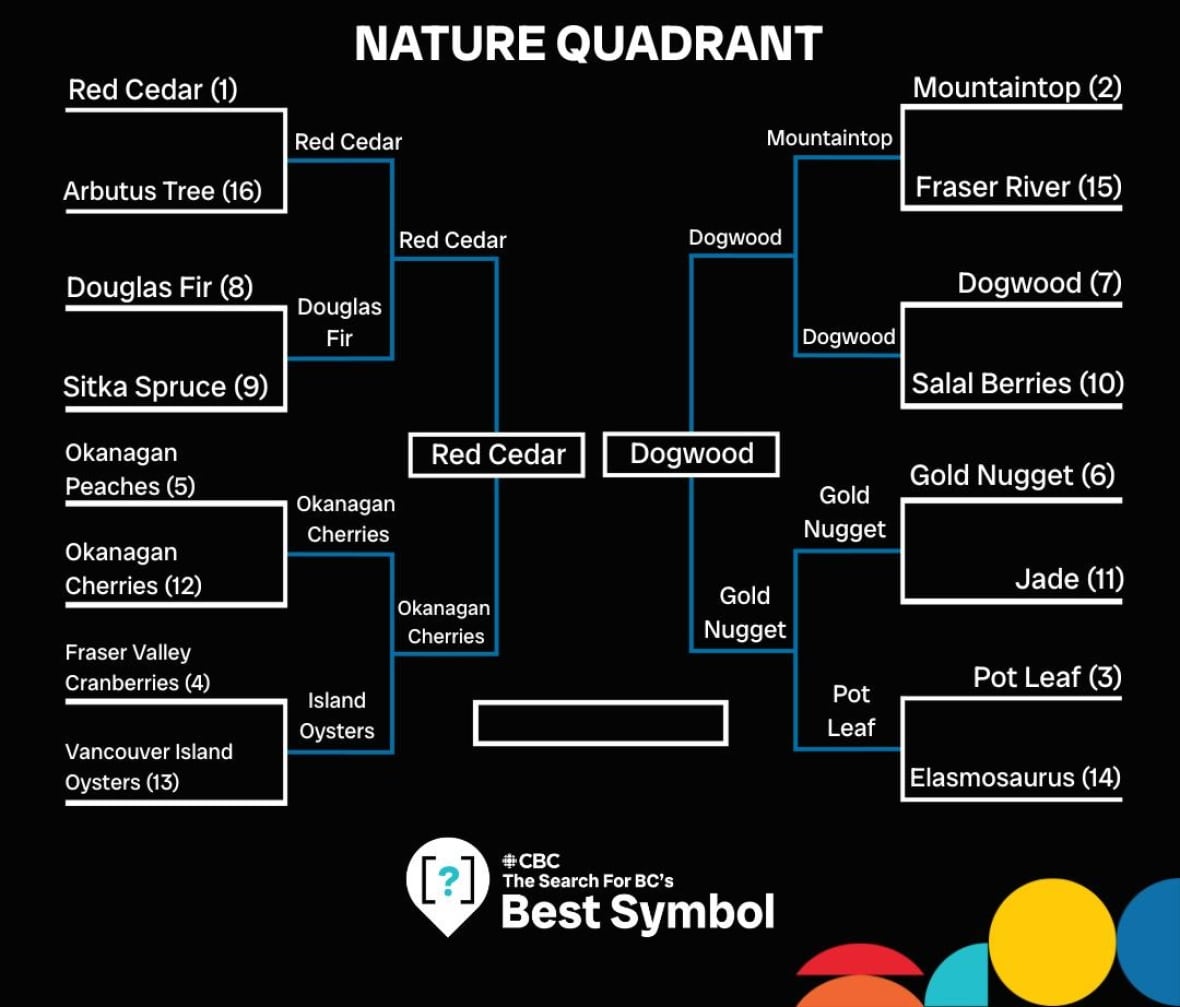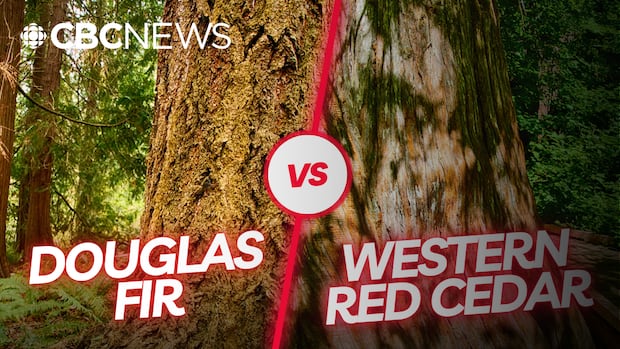Search for B.C.'s Best Symbol: Nature Championship
It's the Pacific Dogwood versus the Red Cedar Tree in the matchup to face the Orca in the final 4
There are many elements of "Super, Natural British Columbia" that are potent symbols of why people are drawn to this province — reasons why our natural beauty and diversity and flora have inspired people from all walks of life.
But in the Search For B.C.'s Best Symbol, the two finalists in the nature portion of the friendly competition are about as different in size and scope as you can imagine.
In one corner, the towering Western Red Cedar — or just "redcedar" — tree, which can reach 60 metres in height, live for a thousand years, and has been used for totem poles, canoes, and just about any outdoor structure you can think of.
In the other, a tiny flower.
Not just any flower, though — the Pacific Dogwood, whose round white petals have been a literal symbol of B.C. companies, diplomas, and everything in between for decades.
It's official flower versus official tree, with the winner moving on to the Final 4.
But which will win?

What makes a symbol?
Beyond the height differences, the matchup is an interesting contrast of why things become a symbol: the Red Cedar did so primarily because of its direct physical impact on British Columbians, from the things it creates to the way it shapes the forest.
"It has intense cultural and ecological significance. It's found all the way up the coast as far north as Haida Gwaii. It is found in mountainous areas …people across the province can see it, and feel that it's part of them."
Meanwhile, the dogwood flower gained its power primarily because of people's affinity for it in the first half of the 20th century, becoming a symbol unto itself.

"It's mainly the natural beauty. It's something nature enthusiasts in Victoria and tourists become very excited about — just the sheer number of dogwood blossoms," said Forrest Pass, a curator at Library and Archives Canada.
"It really marked the city and marked the region as somewhere a bit different from the rest of Canada."
Both the stories of the Red Cedar and the Dogwood were settled in this province many decades ago, and are still revered today — but it's up to you to decide which one moves on.
Voting is open until 10 p.m. Pacific time.





